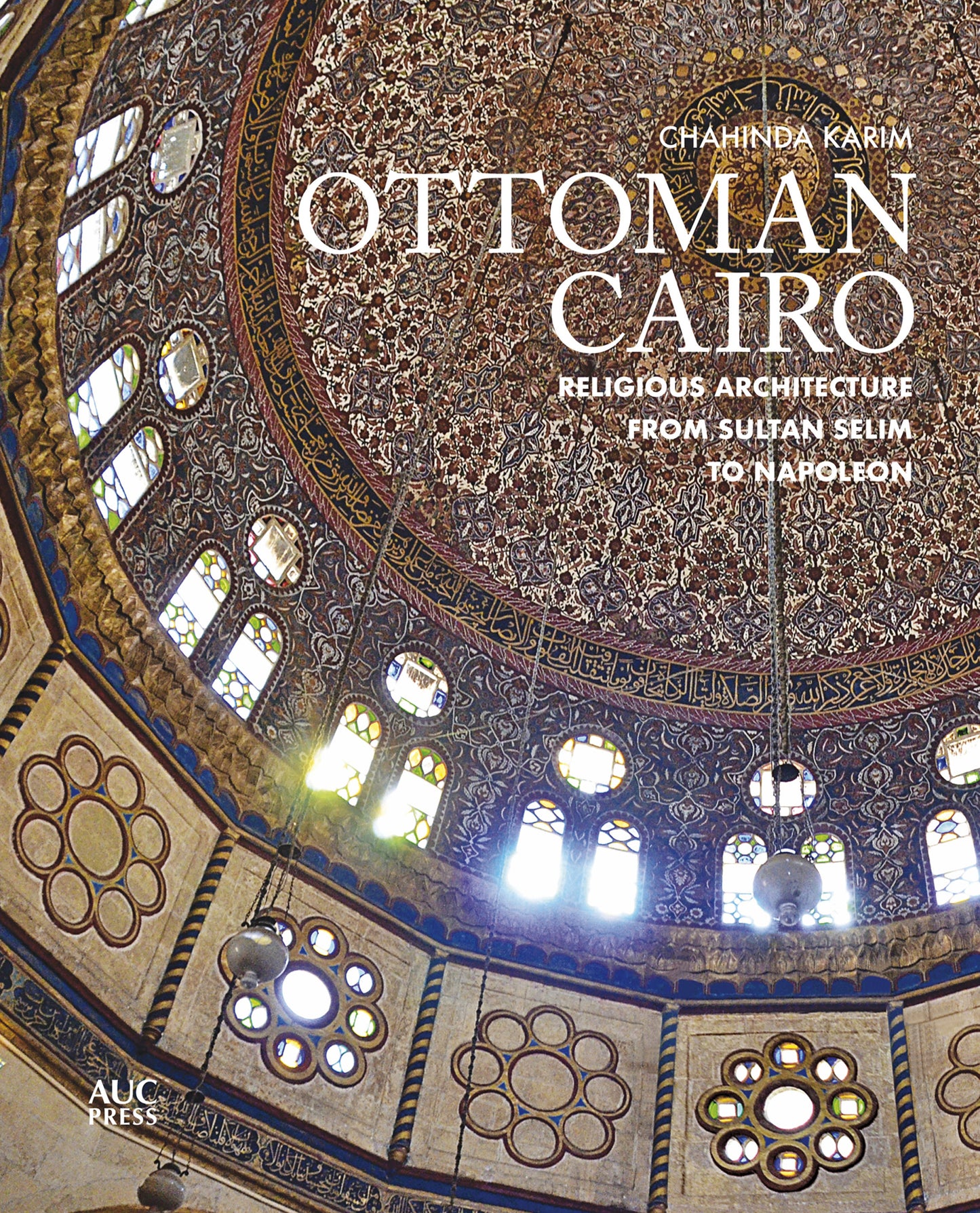We're sorry. An error has occurred
Please cancel or retry.
Ottoman Cairo

Some error occured while loading the Quick View. Please close the Quick View and try reloading the page.
Couldn't load pickup availability
- Format:
-
07 December 2021

A unique, richly illustrated study of Ottoman religious buildings standing today in Cairo
With the conquest in 1517 CE of Egypt by the Ottomans, Cairo lost its position as the capital of the Islamic empire to Istanbul but it retained an eminent position as the second most important city, with Egypt still regarded as one of the wealthiest provinces of the new empire. Round minarets with pointed hoods, as symbols of the new rulers, began filling the landscape alongside the octagonal minarets with pavilion tops of the Mamluks, new mosques, zawiyas, and madrasas/takiyas were built to emphasize the continuation of Sunni Islamic rule, while the use of tiles imported from Turkey introduced new decorative styles to the city’s existing rich carvings and marble paneling.
This book invites readers and students to revisit a long-overlooked era of Cairo’s architectural evolution, offering a unique, comprehensive study of Ottoman religious buildings still standing today. It provides detailed descriptions and walk-throughs of the buildings covered, visually, through its rich collection of plans, line drawings, and photographs, and through the narrative that infuses each image with life, shedding light on the continuous evolution of architecture in Cairo even after the city had ceased to be the capital of the Islamic empire.


“Chahinda Karim’s comprehensive and well-illustrated survey fills a generational gap in scholarship on Cairo’s Ottoman architecture and reminds us of the formidable power of this magnificent city to mold all stylistic influences into a formal and spatial character all its own.”—Nasser Rabbat, Massachusetts Institute of Technology
“With this meticulous study, Chahinda Karim at last fills a much-needed gap in Cairo’s architectural history, bringing us the glories of the city’s Ottoman architecture in clear and delightful form.”—Tarek Swelim, Hamad Bin Khalifa University, Qatar
“A welcome contribution to the history of Islamic architecture in Cairo and of architecture in the Ottoman Empire, this amply illustrated and accessible documentation of religious monuments from four centuries fills a gap in the literature and stimulates further interest in the field.”—Doris Behrens-Abouseif, SOAS, University of London
"This copiously illustrated volume explores the little-known religious buildings erected in Cairo during the three centuries before 1800 when Egypt was ruled from the Ottoman capital at Istanbul. Combining meticulous first-hand observation with extensive research in the historical sources and archival documents, Karim shows how patrons and builders adapted foreign ideas and forms to local styles and techniques to create dozens of buildings that contribute to Cairo’s unique architectural heritage."—Jonathan Bloom, Boston College
"Chahinda Karim is to be commended for bringing to light the architecture of an era poorly thought of and widely neglected. . . .This will be a welcome and useful starting point for all students who can visit the religious monuments of the Ottoman period."—Caroline Williams, ASTENE Bulletin
"This work challenges a common misconception among scholars that Ottoman religious architecture in Egypt, from the 16th to 18th century, represents a decline in skill and attractiveness from the architecture of the preceding Mamluk period. The book shows how Mamluk religious structures influenced the Ottoman newcomers and their search for a new local architectural identity."—AramcoWorld
Acknowledgments
Preface
Note to the Reader
List of Illustrations
Historical Introduction
The Origin of the Ottomans and the Architecture of the Beyliks in Anatolia
The Ottomans of Egypt
Chapter 1: The Bridge from Mamluk to Ottoman in the Early Sixteenth Century
The Mosque and Madrasa of Khayrbak (1502–20)
The Takiya of Ibrahim al-Kulshani (1519)
The Zawiya of Hasan al-Rumi (1522)
The Role of Sufism at the Beginning of the Ottoman Period
The Zawiya and Dome of Shaykh Seoud (1534)
The Mosque of Shahin al-Khalwati (1537)
Chapter 2: Buildings of the Sixteenth Century
The Buildings of Suleiman Pasha
The Mosque of Suleiman al-Khadim in the Citadel (1528)
The Mosque of Suleiman Pasha in Bulaq (1531)
The Takiya-Madrasa Suleimaniya (1543)
The Mosque of Muhibb al-Din Abu al-Tayyib (early 16th century)
The Mausoleum Dome of Prince Suleiman
The Mosque of Dawud Pasha (1548)
The Mosque of Mahmud Pasha (1567)
The Mosque of Sinan Pasha
The Mosque of Messih Pasha (1575)
The Mosque of Murad Pasha (1578)
Chapter 3: Buildings of the Seventeenth Century
The Mosque of al-Malika Safiya (1610)
The Mosque of al-Burdayni (1616–29)
The Mosque of Alti Barmak (1621–22 and 1711)
The Mosque of Yusuf Agha al-Hin (1625)
The Mosque of Taghribirdi (1634)
The Mosque of Marzuq al-Ahmadi (1635)
The Zawiya of Ridwan Bey (1650)
The Mosque of ‘Uqba ibn ‘Amir (1655)
The Mosque of ‘Abidy Bey (1660)
Ribat al-Athar, also known as Athar al-Nabi (1662)
The Mosque of Aqsunqur al-Faraqani al-Habashli (1669)
The Mosque of Mustafa Jorbagi Mirza (1698)
Chapter 4: Buildings of the Eighteenth Century
The work of ‘Abd al-Rahman Katkhuda: The Zawiya (1729)
The Mosque of al-Amir ‘Uthman Katkhuda al-Qazdughli (1734)
The Mosque of al-Fakahani (1735)
The Mosque of al-Shaykh Mutahhar (1744)
The Complex of Sultan Mahmud I (1750)
The work of ‘Abd al-Rahman Katkhuda: Al-Azhar Mosque (1753)
The Mosque of Yusuf Jorbagi (1763)
The Mosque of Muhammad Bek Abu al-Dhahab (1774)
The Takiya Refa‘iya (1774)
The Mosque of al-Sadat al-Wafa’iya (1784)
Conclusion
Annex: Four Ottoman Sabil-Kuttabs
An Introduction
Sabil of Khusruw Pasha (1535)
Sabil of Taghribirdi (1634)
Sabil of Sultan Mahmud I (1750)
Sabil of Mustafa III (1758)
List of Ottoman Governors in Egypt
Glossary
Abbreviations
Notes
Bibliography
Index



